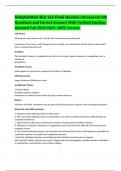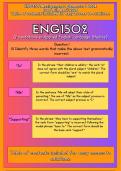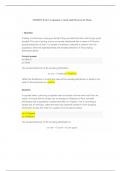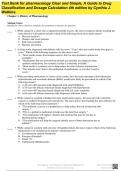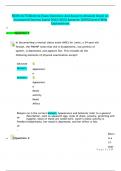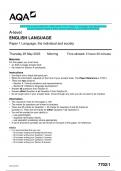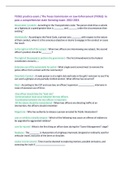Exam (elaborations)
Binghamton Bio 114 Final Review (Answered) 430 Questions and Correct Answers With Verified Solution, Updated Fall 2024/2025. 100% Correct.
- Course
- Institution
Binghamton Bio 114 Final Review (Answered) 430 Questions and Correct Answers With Verified Solution, Updated Fall 2024/2025. 100% Correct.
[Show more]
